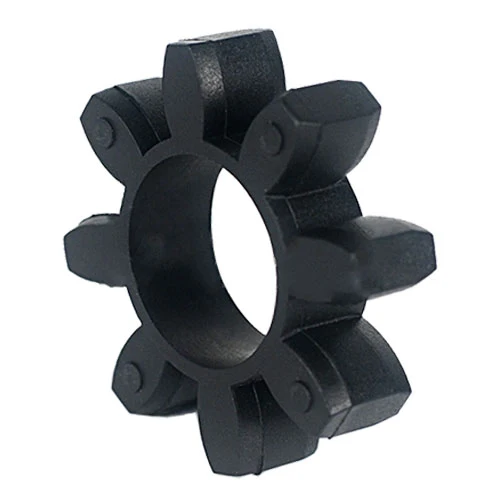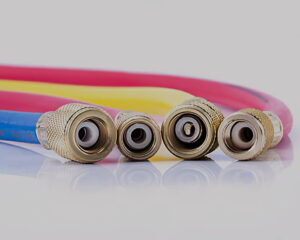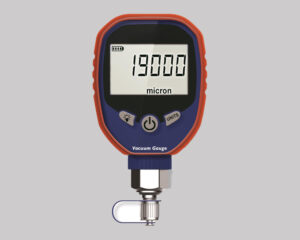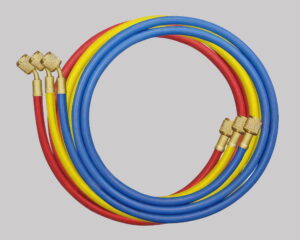keyword: noise level of vacuum pumps
The ideal sound of a rotary vane vacuum pump during operation should be steady and low-pitched. Any occurrence of sharp, buzzing, or friction noises, as well as impact sounds or a noticeable increase in decibels, requires immediate inspection. Let’s explore the possible causes as outlined below:
1. Low vacuum oil level (No oil visible in the oil sight glass)
Insufficient vacuum oil level leads to inadequate lubrication, reduced cooling, and increased friction, resulting in louder operational noise.
Solution: Ensure the vacuum pump chamber contains enough oil, maintaining the level between the maximum and minimum marks while the pump is running. Regularly monitor the oil level to maintain the pump’s performance and reduce unnecessary noise.

2. Blocked silencer hole
Obstruction in the vacuum pump’s internal silencer hole can cause a concerning “oil hammer” effect, especially under extreme vacuum conditions. Consequently, the pump’s operating noise becomes notably louder and acquires a sharper tone. You can easily identify this problem by observing a significant noise reduction when slightly opening the gas ballast valve or the pump’s inlet.
Solution: Thoroughly clean or replace the components responsible for silencing the pump. Regular maintenance and ensuring an unobstructed silencer hole will maintain optimal pump performance.
3. Excessive inlet pressure
High inlet pressure can result in increased noise levels, especially under heavy load conditions. Inspect the internal oil mist filter for blockages, as a clogged filter significantly contributes to noisy pump operation. Additionally, verify that the pump’s pumping speed is appropriate.
Solution: Lower the inlet pressure by either increasing the pump’s pumping speed or reducing the inflow gas volume to reduce noise levels.
4. Worn flexible coupling
In typical oil-sealed rotary vane pumps, a flexible coupling connects the motor and pump body. Over time, the coupling may undergo aging or wear due to elevated temperatures. Damaged couplings can cause distinct impact noises during pump start-up and shutdown.

Solution: Address the issue by replacing or repairing the damaged coupling.
5. Bearing wear and tear
Needle roller bearings and sliding bearings in the pump can experience wear and tear, especially with continuous operation or the entry of foreign particles into the pump chamber. Worn bearings lead to noticeably noisier pump operation, often accompanied by a distinct buzzing sound.
Solution: Conduct a thorough inspection and promptly address any signs of bearing damage. Consider performing necessary maintenance tasks or replacing the worn bearings and rotary vanes.
6. Excessive wear in vacuum chamber or rotary vanes

Worn rotary vanes characterized by abrasions, cracks, or missing edges can adversely affect the vacuum pump’s performance, resulting in unusual noises during operation. Dust or hard particles entering the pump chamber can cause rapid wear and further amplify noise during operation.
Solution: Repair or replace the worn chamber and rotary vanes. Opt for high-quality vanes made from durable materials to extend their lifespan and minimize noise generation.
7. Motor-related noise
Unusual noises originating from the vacuum pump can often be attributed to motor-related issues, including worn motor bearings, phase loss, or rotor wear.
Motor bearings play a vital role in supporting the rotating elements of the motor. Over time, these bearings can undergo wear and tear, leading to increased friction and audible noises. Additionally, if there is a phase loss in the motor windings, it can cause irregularities in the motor’s rotation, resulting in distinctive noises during the pump’s operation. Furthermore, as the motor rotor experiences wear due to continuous usage, it may cause vibrations and additional noise that propagates throughout the pump assembly.
Solution: Address motor-related issues promptly by repairing or replacing the motor. Regular maintenance and timely interventions will ensure optimal pump performance and reduce noise levels during operation.
Coolink, a TOP 3 Global HVAC Vacuum Pump Manufacturer & Quality Industrial Vacuum Pump Supplier from China






